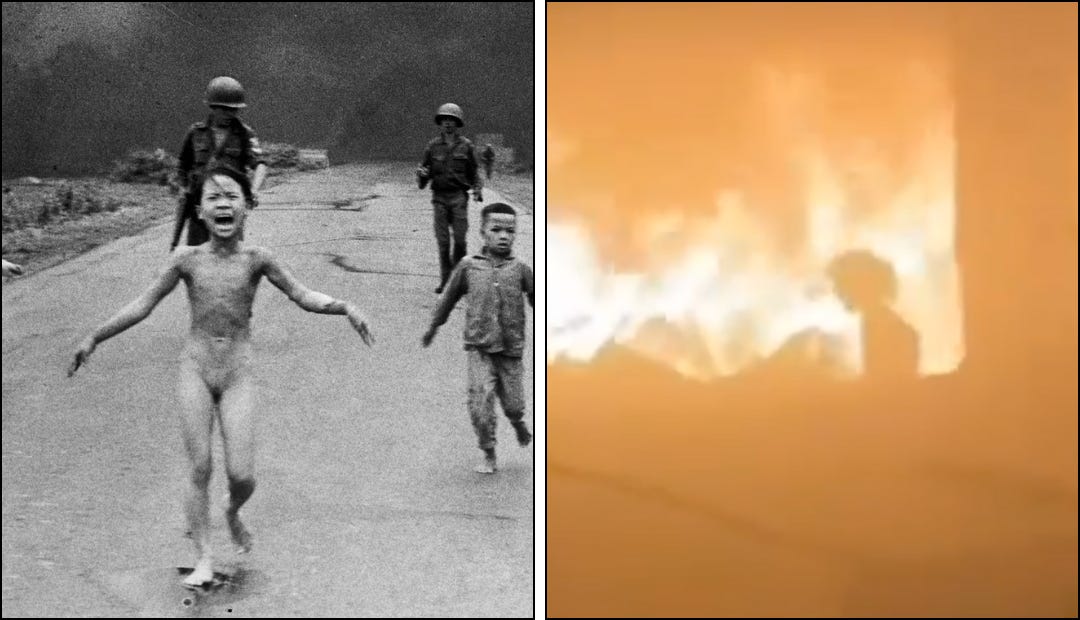Why Did Burning Girls Matter in Vietnam but Not in Gaza?
The 'Napalm Girl' photo shocked the world and helped end the Vietnam War – but a viral video of a child surrounded by flames and other similar images in Gaza can't even provoke a ceasefire.

When the ‘Napalm Girl’ photo appeared in US and international media in 1972, it shocked the world. The image showed a young Vietnamese girl, Phan Thi Kim Phuc, running naked, screaming in agony, her body burned by napalm dropped by the US-backed South Vietnamese army. The photo captured the raw, inescapable truth of war, and it forced people, especially in the United States, to confront the human cost of their government’s actions in Vietnam. It became a catalyst, a turning point, a symbol of a war that had lost its moral justification.
Now, more than 50 years later, the world is again seeing images of children burned alive. But this time, the response is different. This time, the images don’t seem to pierce through power in the same way. The pain in Gaza is undeniable, the evidence overwhelming. But the accountability is missing.
Just on Monday, footage emerged from Gaza after an Israeli airstrike hit the Fahmi al-Jirjawi school in Gaza City. The school was sheltering hundreds of displaced Palestinian families, many sleeping in makeshift tents in the courtyard and classrooms. At least 36 people were killed in the bombing, according to Al Jazeera, and many of them (nearly half) were children. Dozens more were critically wounded, with bodies burned beyond recognition.
One clip in particular shook many. It showed a 5-year-old child, Ward Jalal al-Sheikh Khalil, trying to escape a burning classroom, her tiny silhouette surrounded by flames. The 11-second video, shot from a distance, spread quickly on Telegram and other platforms. You could barely see her form against the fire. Somehow, Ward survived. But her mother and at least five of her siblings were killed. Her father is in critical condition.
When I saw that clip of Ward, I immediately thought of Kim Phuc. Like Ward, Kim survived a fire meant to kill. She survived the war that burned her, and later became a peace activist, a UNESCO ambassador, and recipient of prestigious prizes. Her suffering, her survival, and her transformation were all given meaning in part because her pain was seen and believed.
But what about Ward?
Today, scenes like Ward’s are not rare; they are daily. In Gaza, there are dozens of “Napalm Girl” moments each day, and they don’t come filtered through distant photo wires or delayed coverage. They come live. This genocide is being live-streamed by Palestinian journalists and by ordinary people who refuse to let their suffering go unseen. Burned children, screaming fathers, headless infants – these images are not just real, they are relentless.
So why won’t the world react the same way? Why did one photo of a burned child help end a war, while hundreds of clips showing burned Palestinian children can’t even provoke a ceasefire?


